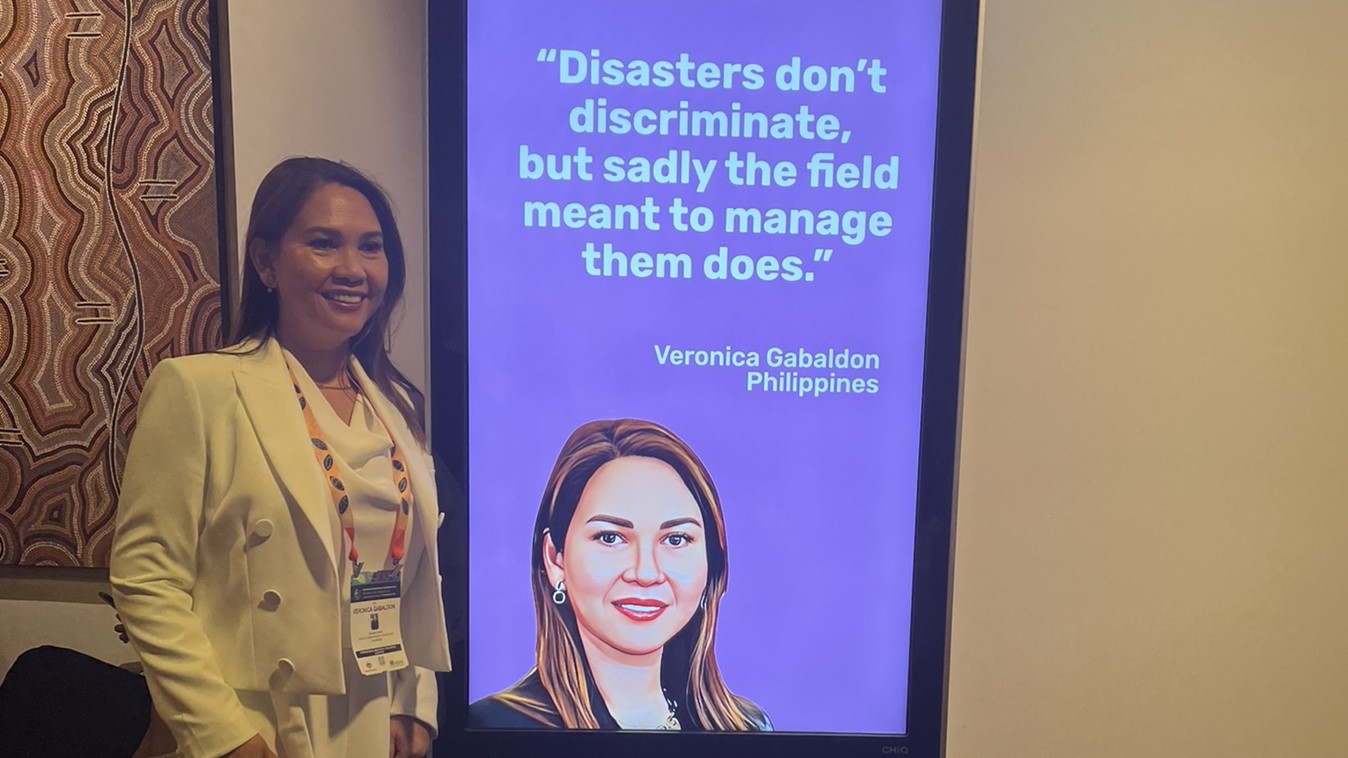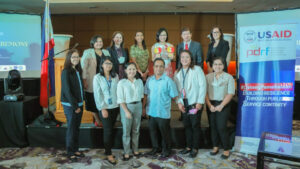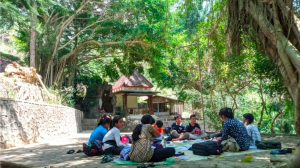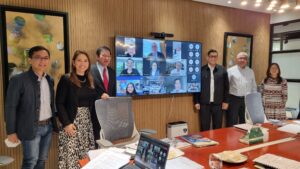All over the world today, there is a growing emphasis on the key role of women as leaders and agents of change to build resilient development pathways, actively participating in the creation and implementation of programs towards building community resilience in the face of disasters caused by natural hazards.
As the world celebrates the International Day of Disaster Reduction and Resilience, an annual observance aimed at promoting a global culture of disaster risk reduction, SM Prime honors 10 women who are making their marks by innovating and inspiring people to work together in creating more resilient communities.
Handpicked from women leaders who were present at the Asia Pacific Ministerial Conference for DRR (APMCDRR), these change-makers prove that these women deserve their seats at the table in creating solutions addressing disaster risks.
1. Mami Mizutori, Special Representative of the United Nations Secretary-General for Disaster Risk Reduction
As the Special Representative of the United Nations Secretary-General for Disaster Risk Reduction and head of the United Nations Office for Disaster Risk Reduction (UNDDR), Mami Mizutori has been working with different stakeholders across the world to promote disaster resilience through collaborative leadership. “Sustainable development can only be achieved if it’s risk-informed and all critical actors, in particular women and girls, are heard loud and clear with their expertise recognized and respected in building communities and nations’ resilience to disasters,” she said. “I urge Governments to engage women and girls in the implementation of national and local strategies for disaster risk reduction throughout the Decade of Action to 2030.
2. Secretary Maria Antonia ‘Toni’ Yulo-Loyzaga, Department of the Environment and Natural Resources (DENR)
Prior to her appointment as the head of DENR, Sec. Loyzaga was in the forefront of several national and international organizations involved in DRR and climate resilience: President of National Resilience Council, member of UNDRR Science and Technology Advisory Group (STAG), Executive Director of Manila Observatory, among others. In her speech in the recently concluded DENR Multi-stakeholder Forum she stated “With your support and under new leadership, the DENR looks forward to charting the course for achieving climate and disaster-resilient, inclusive, green and blue recovery for our nation. The Department’s role is to build the lifelines to resources on land, and in the air and sea, that will ensure inclusive, resilient, and sustainable development. In order to do this, we will need to work with partners to develop integrated strategies for a science-based, risk-informed, ethical, and equitable stewardship of our environment.
3. Dr. Esline Garaebiti of Vanuatu
Dr. Esline Garaebiti, the winner of the 2022 Women’s International Network for Disaster Risk Reduction (WINDRR) Leadership Excellence Awards, was instrumental in the design and rollout of the Oceania Regional Seismic Network (ORSNET) across Vanuatu, New Caledonia, Solomon Islands, Papua New Guinea, Tonga, and Samoa. With ORSNET, the region has improved its tsunami detection system and, as such, reduced the risks of a tsunami in these countries. She is also the advocator for the Melanesia volcano network between PNG, Solomon Islands, and Vanuatu to reduce the risks of volcanic eruptions in Melanesia. “Involving women in disaster risk reduction in Vanuatu helped ensure that the needs of the most at-risk and marginalized people are considered in national, provincial, and community disaster risk management planning, from prevention to recovery,” she said.
4. Dr. Homolata Borah of India
Dr. Homolata Borah, winner of the 2022 WIN DRR Leadership Awards – Rising Star Award, is a researcher from India who has been working towards reducing disaster risk for some of the most vulnerable and diverse communities living in the world’s largest inhabited river island of Majuli in India. Over the last nine decades, the island has already lost 30% of its land mass due to river erosion. Dr. Borah has demonstrated leadership through the sheer breadth of her engagement – from the local to state to national levels. She has been equally at ease discussing strategic issues with her State’s Chief Minister as she has been communicating and connecting directly with communities living in Majuli. She has exhibited remarkable imagination in connecting local issues with higher-level policy discourse. “We need to go beyond the rhetoric of women’s empowerment to more fundamental changes in the way resources are managed equally by women and men,” she said about women taking leadership in disaster risk preparedness.
5. Lorna Victoria, Advisor for Center for Disaster Preparedness Foundation, Inc.
“With more women taking active roles in DRR, including in decision-making and leadership, there is more life, color, even flavor in community-based disaster risk management (CBDRM),” says Lorna Victoria. “Women contribute a different lens and perspective; joy and passion radiating, across the many efforts and initiatives by local leaders and women working on the ground.”
Victoria has advanced the cause of CBDRM in the Philippines through her initiatives in capacity building of communities and local governments. She is a connector of communities, civil society organizations, and government. Her work laid the ground for the recognition of the importance of community participation and empowerment toward disaster risk reduction from the community to the national, regional and global levels.
6. Veronica Gabaldon, Executive Director of the Philippine Disaster Resilience Foundation (PDRF)
“Disasters don’t discriminate, but sadly, the field meant to manage them does,” says Veronica Gabaldon. “Too often women are left out of the conversation when DRR policies and programs are designed and implemented.” Seeing for herself the effects of Typhoon Ondoy (Ketsana) in Metro Manila in 2009, Gabaldon volunteered at the Philippine Disaster Resilience Foundation and has not turned back since. Gabaldon has also been advocating women’s leadership in resilience-building, believing that it will allow for a more efficient response during disasters. “I aspire for women to take their leadership to the next level,” she said. “From what I have witnessed, where women are involved, there will most likely be active participation by the community because women are trusted members. They have a good understanding of gender sensitivities and vulnerable sectors. They are well-positioned to lead policy-making and take an active role in its implementation. Women must be at the forefront of thought leadership panels and institutions’ decision-making structures.”
7. Maria Isabelle ‘Beng’ Climaco, former mayor of Zamboanga City
For Climaco, adopting “a whole-family, a whole-city, and a whole-country” approach is the most effective way to promote disaster resilience among Filipinos. This was one of the things that guided her during her time as mayor of Zamboanga City and chairperson of the City’s Disaster Risk Reduction and Management Council. While those days are now behind her, her passion for disaster resilience continues to burn brightly to this day. She says disaster responses require continuous dialogue and inclusion of all members of society, including those who are too often excluded from these decisions – women, children, senior citizens, and persons with disabilities – to achieve synergy and resilience. “Inclusivity is strength,” she says. “Each individual’s expertise can help prevent, address, and mitigate disasters by a structure that identifies a system of collaboration.”
8. Cynthia Diaz, developer of the Padayon Donation Matching App
With her classmates Carlos Centeno, Jr., and Ludwig Federigan at the Asian Institute of Management, Cynthia Diaz led the development of the Padayon Donation Matching App which aims to bridge donations of individuals or corporations to areas that would need it most when disaster crises arise. The idea came from the collective experiences of the students in handling relief operations, particularly in handling donations and matching them with the needs of the recipients. From a school project, the program eventually became an actual mobile application that addresses the problems such as donation monitoring, transparency, and accountability from receipt to distribution. It also aims to serve as an arm of private companies and institutions that are willing and able to donate, but unsure of which platform to use. The donation app won two major awards in the AHA Centre HELIX iPitch Competition in the ASEAN Region.
9. Engr. Liza Silerio, ARISE Global Board Member and Vice President, SM Supermalls
Liza Silerio is a Global Board Member of the UNDRR led Private Sector Alliance for Disaster Resilient Societies (ARISE) and leads the Sustainability and Corporate Resiliency of SM Supermalls. “In SM, we adopt an integrated approach in determining how we could provide the most value for our stakeholders over the short, medium, and long term. First, we identify our actual impacts on our communities based on the needs of our stakeholders and the extent of our abilities and resources. We then prioritize, integrate, and concretize the positive impacts we are able to generate.” She fully supports the aspirations of Mr. Hans Sy for a sustainable lifestyle property development that protects communities and promotes good business. Engr. Silerio, together with SM’s executives, engineers, architects and operators, highlights SM Prime’s investments on energy efficiency, waste management, and disaster resilient features – be it a mall, a hotel, a business complex or leisure properties through the release of its annual report.
10. Jessica Sy, AVP Business Cluster Head, SM Development Corporation (SMDC)
Knowing first-hand how disasters triggered by natural hazards can affect families and communities in various vulnerable areas across Asia, Jessica Sy has called for stronger private sector collaboration towards making communities resilient, particularly highlighting the role of women in risk reduction and disaster response. “I call on women leaders from all levels of society including those in the government and private sectors to have active and meaningful participation and leadership in decision-making in disaster risk reduction,” Sy declared, addressing an audience of women leaders including Special Representative of the Secretary-General for Disaster Risk Reduction and UNDRR Head Mami Mizutori, Australian Ambassador for Women and Girls Christine Clarke and the University of Queensland’s Aunty Gaja Kerry. Sy is a graduate Queensland University of Technology (QUT) with a Bachelor of Design (Honours) Architectural Design degree and comes from three generations of the family who is among Asia’s leading real estate developers that has successfully integrated sustainable development and disaster resilience in its business framework.



